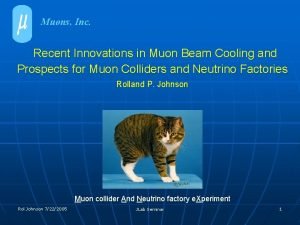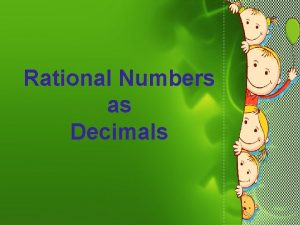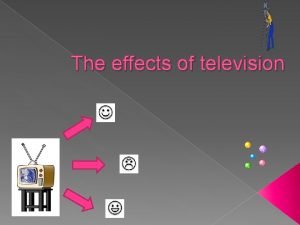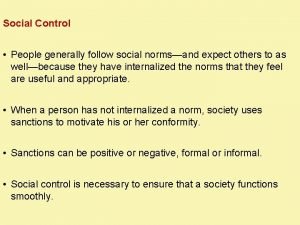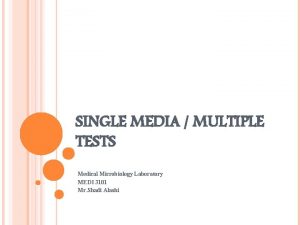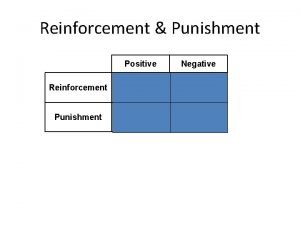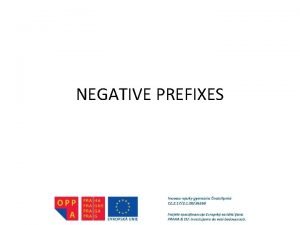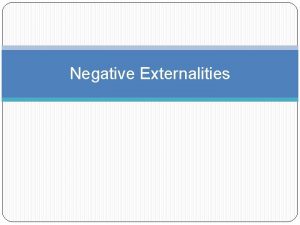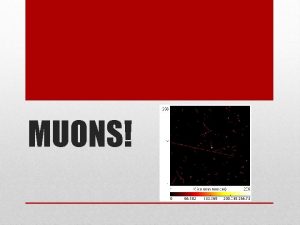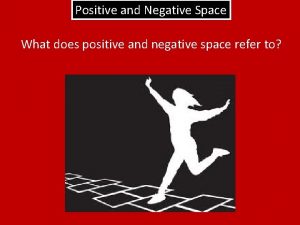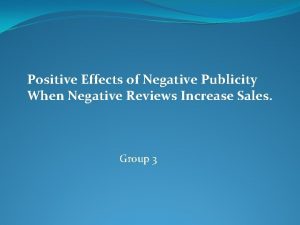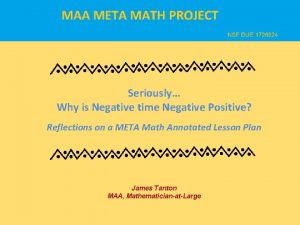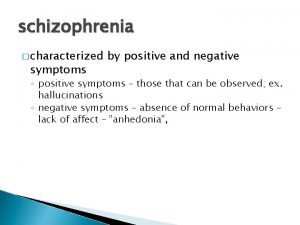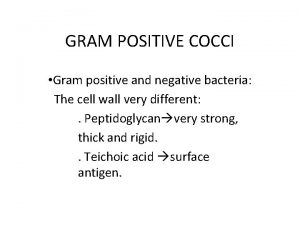Lifetime of Positive and Negative Muons in Matter


















- Slides: 18

Lifetime of Positive and Negative Muons in Matter 正および負電荷の ミューオンの物質中での寿命 List of Contents 1. Purpose st, 2014 July 1 2. Decay of Positive and Negative Muons Suguru Tamamushi 3. Experimental Procedure and Setup 4. Results 5. Summary 1

1. Purpose The purpose of this research is: 1. To understand the basics of plastic scintillators, coincidence, anticoincidence, and accidental coincidence using cosmic ray muons. 2. To test whether decays of positive and negative muons in materials can be observed. • Cosmic rays include both positive and negative muons. The ratio of positive to negative muons in cosmic rays is 1. 3 : 1 around 1 Ge. V/c. • Cosmic ray muons are stopped in materials. • Muons stopped in materials have different lifetimes. Material Free Decay 2. 2 in C 2. 2 2. 0 In Al 2. 2 0. 88 In Fe 2. 2 0. 20 2

2. Decay of Positive and Negative Muons 2. 1 Decay of Positive Muons 3

2. 2 Decay of Negative Muons enucleus µµ- p + n + …. 4

decay capture Lifetime (μs) 2. 5 2 1. 5 1 0. 5 0 0 20 40 60 80 Atomic Number Z 100 5

3. Experimental Procedure and Setup 3. 1 Experimental Procedure The time difference (0 ~ 20 μs ) between incoming muon and decay electron or positron is measured. It is recorded to create a time spectrum. 1. A cosmic ray muon is detected by the top plastic scintillators. This is START time of measurement. 2. The muon stops in the material and decays into an electron or positron 3. The emitted electron or positron is detected by the plastic scintillators. This is the STOP time of measurement. µ- e- µ- Plastic Scintillator(s) Aluminum, Iron or Plastic Scintillator(s) e- 6

3. 2 Experimental Setup e#1 Plastic Scintillator PMT Previous Setup #2 Plastic Scintillator PMT #3 Plastic Scintillator PMT e#1 Plastic Scintillator PMT #2 Plastic Scintillator PMT My Setup Aluminum, Iron, or Plastic #3 Plastic Scintillator PMT #4 Plastic Scintillator PMT 7

4. Results 1. The reduction of background using coincidence 2. Positive muon lifetime 3. Test of whether the effects of nuclear capture of µ- can be seen in aluminum 4. 1 Reduction of Background Using Coincidence • The total count is 3709 • The total count from 10 to 20 μs is only 50. • The accidental coincidence between START and STOP signals are substantially reduced. • Here, a histogram from 0 to 20 μs is shown. For the rest of this report, I will show histograms from 0 to 10 μs 8

4. 2 Positive Muon Lifetime Fit: 1 – 10 μs 2. 5 2. 4 Lifetime (μs) • Positive muon lifetime was measured using iron. • Negative muon lifetime in iron is known to be 0. 20 μs. • So the positive muon lifetime can be measured after 1 μs. • The data with iron was fitted from 1 to 10 μs to eliminate the effect of negative muons. • The positive muon lifetime was measured to be 2. 1 ± 0. 15 μs. 2. 3 2. 2 2. 1 2. 097 2. 039 2 1. 9 1. 8 1. 7 0 0. 5 1 Iron 0 microsec 1. 5 2 iron 1 microsec For comparison: Fit: 0 – 10 μs 9

4. 3 Test of whether the effects of negative muon decay can be seen in aluminum • Negative muons and positive muons decay independently. Therefore the fitted function is: Decay of negative muon Decay of positive muon • µ- lifetime is extracted to be 0. 80 ± 0. 11 μs • µ- lifetime in aluminum is expected to be 0. 88 μs • My results agree well with earlier value • The discrepancy at 0 - 2 μs suggests the effect of nuclear capture of negative muons. • This is a hint of shorter lifetime but further measurement is needed. 10

• I also tested using positive muon lifetimes of 2. 1 and 2. 0 μs. In case of 2. 1 μs: In case of 2. 0 μs: Decay of negative muon Decay of positive muon • µ- lifetime is extracted to be 0. 93 ± 0. 13 μs 11

In case of 2. 0 μs: Decay of negative muon Decay of positive muon • µ- lifetime is extracted to be 0. 62 ± 0. 28 μs • These results agree with earlier data. • The discrepancy at 0 - 2 μs is smaller but still can be observed even if I use 2. 1 or 2. 0 μs. 12

5. Summary • The purpose of this experiment is 1. To understand the basics of plastic scintillators, coincidence, anticoincidence, and accidental coincidence using cosmic ray muons. 2. To test whether the decays of positive and negative muons in material can be detected. • Positive muons decay into positrons. • Negative muons form muonic atoms in matter and decay or are captured by nucleus. • Therefore, the negative muon lifetime is shorter. • In this research, the lifetime of muons in aluminum and iron were measured. • The background was substantially reduced using coincidence. • The lifetime of positive muons was measured with iron fitted from 1 to 10 μs. • I tested whether the effects of negative muon decay can be observed. • There is a hint of shorter lifetime of negative muons but further measurement is needed. 13

Backup Slides 14

Appendix A: Negative Muon Lifetimes Material Atomic Number Z Negative Muon Lifetime (μs) Error (μs) H 1 2. 194903 0. 000066 C 6 2. 020 0. 020 O 8 1. 640 0. 030 Al 13 0. 880 0. 010 Ca 20 0. 333 0. 007 Fe 26 0. 201 0. 004 Ag 47 0. 085 0. 003 Pb 82 0. 005 Total Nuclear Capture Rates for Negative Muon, T. Suzuki et al. , Physical Review C, (1987) 15

Appendix B: Background Reduction Previous Setup 65000 sec Average Background: 2. 7 count/bin Total Count: 313 Counts from 10 to 20 μs: 70 My Setup 130000 sec Average Background: 0. 0 count/bin Total Count: 194 Counts from 10 to 20 μs: 0 The background was substantially reduced using coincidence. 16

Appendix C: Ratio of negative and positive muons 17

Appendix D: Observation of Negative Muon Lifetime • The time spectrum data of muon decay in aluminum is divided by the function for positive muon decay. Divided by positive muon decay, is obtained. 18
 Muons
Muons Positive rational numbers
Positive rational numbers Order positive and negative integers decimals and fractions
Order positive and negative integers decimals and fractions Gray matter in the brain
Gray matter in the brain Gyrus and sulcus function
Gyrus and sulcus function Gray matter and white matter
Gray matter and white matter Pallium telencephalon
Pallium telencephalon Positive impacts of material technology
Positive impacts of material technology Materials technology positive impacts
Materials technology positive impacts She do her homework on the service bus
She do her homework on the service bus Menstrual cycle positive feedback
Menstrual cycle positive feedback Cotton gin positive and negative effects
Cotton gin positive and negative effects Positive and negative effects of television
Positive and negative effects of television Positive impacts of materials technology
Positive impacts of materials technology Negative rights vs positive rights
Negative rights vs positive rights Formal negative sanctions examples
Formal negative sanctions examples Tsi test: principle
Tsi test: principle Positive and negative school culture
Positive and negative school culture When olivia makes rude noises
When olivia makes rude noises
